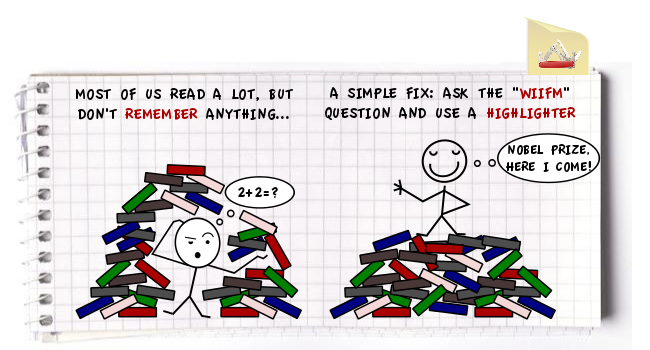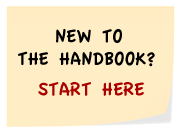Warning: file_get_contents(): php_network_getaddresses: getaddrinfo failed: Name or service not known in /www/htdocs/w00e5436/Handbook/wp-content/plugins/digg-digg/include/dd-class.php on line 1202
Warning: file_get_contents(http://feeds.delicious.com/v2/json/urlinfo/data?url=http%3A%2F%2Fhandbookofawesome.com%2F2012%2F06%2Freading%2F): failed to open stream: php_network_getaddresses: getaddrinfo failed: Name or service not known in /www/htdocs/w00e5436/Handbook/wp-content/plugins/digg-digg/include/dd-class.php on line 1202
“Reading furnishes the mind only with materials of knowledge; it is thinking that makes what we read ours.” – John Locke

Let’s try an experiment: Think of a really interesting non-fiction book you read a year or so ago. Maybe a Malcolm Gladwell or an Anthony Beevor? Are you thinking about it? Good. Now, think of how you would explain the key points of the book to a friend.
Is it difficult? Probably. If you’re anything like most people, you probably only have a sketchy memory of the most high-level idea of the book (which is pretty much what you had when you first picked it up) as well as one completely useless, out-of-context fact (did you know that Breznev commissioned a factory to make buttons so he could have his own American-style denim jacket?). Most of us read non-fiction to learn something about the topic, but pick up astonishingly little lasting knowledge. Why is this?
The key to making information stick is to make it personally valuable. In high school, most of us were forced to study something completely uninteresting (“The Laffer curve, anyone? Anyone?”), so we know how excruciatingly difficult it is to actually learn anything when you have no stake in what you’re reading.
The solution to this is simple: Every time you pick up a book or an article, you need to pose the WIIFM-question, i.e. “What’s in it for me?” The author has, naturally enough, composed the text based on what he/she thinks is relevant, but if you want any of it to stick in your mind, you need to read it focusing on what YOU think is important. This not only motivates you but makes the information more personally relevant thus easier to retain. In addition to WIIFM, another good tactic comes straight from high school: highlight the most insightful statements and key messages. This not only focuses your attention on them, but also turns mere passive reading into active learning, thus strengthening the memory in your mind (for further reading, we recommend Eric Jensen: Brain-based learning).
Reading with a focus on WIIFM and a highlighter in hand carries three key benefits:
- You’re reading becomes faster and more efficient as you automatically focus on the parts that are interesting for you.
- Since you’re reading with your own interests and background acutely in mind, you integrate the key points in the text automatically with your existing knowledge, drawing connections and spotting interdependencies with things you already know.
- Many authors seem to write their text with the lowest common denominator of the audience in mind: any novel concepts or ideas are repeated several times so even the simplest reader won’t accidentally sprain his/her brain. This means that re-reading a book becomes very time-consuming, since repetition means many more pages. Using our method, the highlighted text automatically forms a great executive summary which you can refer to at a later point, taking just a few minutes to remind yourself what the main takeaways of the book without having to slog through the entire text. This can really boost your long-term memory of the topic.
How to get started:
- The next time you start reading a non-fiction book, think about why you are reading it and how you hope to use what you learn.
- Use a highlighter to mark the key points from your perspective. The goal is not to paint the whole book neon green (although imagine how great that would look), but to only highlight parts which you think you will seriously need later.
- Consider jotting down additional ideas as notes in the margin of the book or in a note-book. Some people prefer first reading with a highlighter only, then re-reading the highlighted parts a few days later while making notes. See which technique works for you.
- Permanently lock the information in your head by repeating it. In its simplest form, this means you review your summary after 1 day, 1 week and 1 month of reading the book, and thereafter annually. If this sounds like a lot of work, it’s not. You’ve already invested a lot of time into the first pass, so the additional trouble of spending a few minutes every year reviewing the information is really a bargain.
Good luck and good summaries!









